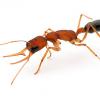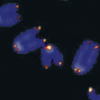Isn't Strumigenys a fungus-farmer? It's in the Attini tribe, I believe. ~6 species live here in NY, but i think they're kind of rare.
No, not at all. Not all Attines are fungus farmers. Only genera in the subtribe Attina are fungus farmers, which Strumigenys is not a part of. Strumigenys are specialist predators of springtails, and they're actually not rare, just inconspicuous. They rarely get over 3 mm (though one tropical species, S. godmani, is 5 mm), and have a highly cryptic coloration, usually a brownish coloration (though varying). The only part about them that stands out about them is the spongiformous tissue on their petiole and postpetiole, though some species have tissue only on the postpetiole and others lack it altogether, though none of those species exist in New York. If you ever need any information on Strumigenys, just ask me. They're my all-time favorite ants, and I'm actually the artist of an upcoming key that is being published by Strumigenys specialist Myrmecologist, Doug Booher. As such, I know quite a bit about the genera. I also made the first ever record of Strumigenys silvestrii in South Carolina.



















